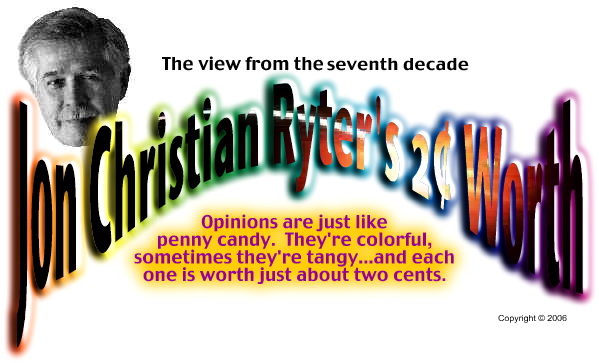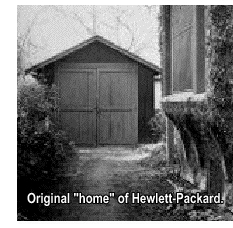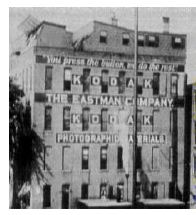
News
Behind the Headlines
Two-Cents Worth
Video of the Week
News Blurbs
Articles
Testimony
Bible Questions
Internet
Articles (2012)
Internet Articles (2011)
Internet Articles (2010)
Internet Articles
(2009)
Internet Articles (2008)
Internet Articles (2007)
Internet Articles (2006)
Internet Articles (2005)
Internet Articles (2004)
Internet Articles (2003)
Internet Articles (2002)
Internet Articles (2001)

The Disappearing Jobs Market
 The
news has been dreary on the jobs front in the United States since the
passage of NAFTA by the Clinton Administration, and it continues
to worsen as more and more American companies are relocating to Southeast
Asia. The New York Times reported on July 19, 2005 that Hewlett
Packard was laying off 14,500 American workers—or 10% of its
global work force.
The
news has been dreary on the jobs front in the United States since the
passage of NAFTA by the Clinton Administration, and it continues
to worsen as more and more American companies are relocating to Southeast
Asia. The New York Times reported on July 19, 2005 that Hewlett
Packard was laying off 14,500 American workers—or 10% of its
global work force. The jobs being cut were all in the area of information technology and
internal support operations. HP's new CEO Mark Hurd said he did
not know which countries would be impacted by the cutbacks even though
he later admitted that the information technology "layer" that
was being trimmed was in the United States. In addition, the company
announced it would no longer contribute to the pension plans of its employees
in the United States suggesting by this comment that HP would
eventually close down its entire American operation, becoming one more
American company that swapped the red, white and blue for the pale blue
flag of internationalism.
The jobs being cut were all in the area of information technology and
internal support operations. HP's new CEO Mark Hurd said he did
not know which countries would be impacted by the cutbacks even though
he later admitted that the information technology "layer" that
was being trimmed was in the United States. In addition, the company
announced it would no longer contribute to the pension plans of its employees
in the United States suggesting by this comment that HP would
eventually close down its entire American operation, becoming one more
American company that swapped the red, white and blue for the pale blue
flag of internationalism.
Hurd told reporters that the company was also eliminating the division that sells business customers. Hurd noted that those employees would be moved into the server, PC and printer units. "We're eliminating layers," Hurd said. "It will make us simpler, nimbler and quicker."
What he really meant was the HP can no longer compete with Dell's low-cost computers and IBM's appeal to business. Trying to compete with them over the last few years cost both market share and profits. Added to that, HP did another number on their employees by eliminating their HP-funded pension plan and converting it to a contributory 401K. That change alone is expected to save HP $1.9 billion per year. It is, after all, all about corporate profits and competing on an international scale for investors.
On the heels
of the HP announcement, both Eastman Kodak and Kimberly
Clark announced plant closings and job cutbacks in the United States
as well.  Hewlett-Packard
has always been an American company. It was created in a small garage
behind Bill Hewlett's parent's house in San Francisco in 1939.
His partner in the venture was Dave Packard. Both entrepreneurs
are Americans. Historians claim that Silicon Valley was created in Bill
Hewlett's garage. The garage is now a part of Americana. Too bad Hewlett-Packard
has chosen not to be.
Hewlett-Packard
has always been an American company. It was created in a small garage
behind Bill Hewlett's parent's house in San Francisco in 1939.
His partner in the venture was Dave Packard. Both entrepreneurs
are Americans. Historians claim that Silicon Valley was created in Bill
Hewlett's garage. The garage is now a part of Americana. Too bad Hewlett-Packard
has chosen not to be.
The sweat equity of Hewlett-Packard's employees transformed the ideas of two electronic geeks into one of the most respected electronics firms in the United States. That company, like many of America's Fortune 500 companies have now put their companies on wheels and are now searching for those elusive consumers of the 21st century, certain in their mind, that those consumers will be found only in the human capital rich third world nations and not in the United States. Yet, HP and the other industry giants who are closing their American plants as they transfer jobs to the third world still expect the American consumers to buy their products as they screw America. The American consumer needs to learn how to say "no."
 Like
Hewlett-Packard, Eastman Kodak also announced it was shedding 10,000
dead weight jobs in the United States as the century-plus old American
company struggles to compete in a global market where "price"
is everything—and American products are no longer valued at a premium.
This is the second jobs cut at Kodak this year. Earlier this year,
the company laid off 15,000 employees bringing to 25,000 the number of
jobs lost in 2005.
Like
Hewlett-Packard, Eastman Kodak also announced it was shedding 10,000
dead weight jobs in the United States as the century-plus old American
company struggles to compete in a global market where "price"
is everything—and American products are no longer valued at a premium.
This is the second jobs cut at Kodak this year. Earlier this year,
the company laid off 15,000 employees bringing to 25,000 the number of
jobs lost in 2005. Like
Hewlett-Packard, Eastman-Kodak was American born and grew
through the sweat equity of immigrant workers in Rochester, New York where
it was born in 1881. Kodak is one of those names like Chevrolet
and apple pie—its 100% American. But Kodak—struggling
to claimstake a share of the booming digital photography market—began
its slow departure from America shortly after then-President Bill Clinton
signed NAFTA into law in 1993.
Like
Hewlett-Packard, Eastman-Kodak was American born and grew
through the sweat equity of immigrant workers in Rochester, New York where
it was born in 1881. Kodak is one of those names like Chevrolet
and apple pie—its 100% American. But Kodak—struggling
to claimstake a share of the booming digital photography market—began
its slow departure from America shortly after then-President Bill Clinton
signed NAFTA into law in 1993.
Rochester, New
York was the city Eastman-Kodak built—and then deserted,  destroying
the dreams of thousands of upstate New Yorkers who, generationally, worked
only for Eastman Kodak. Rochester, like many of the industrial
cities of the northeast and the textile cities of the south, have become
virtual ghost towns. The factories left. Stores closed. And finally, with
no jobs—or hopes of them—the homeowners, with no buyers for
their homes, ultimately saw their dreams of the future turned into the
fruitless nightmares of today. With their homes assumed by banks and mortgage
companies that didn't want them, the unemployed had no choice but to pack
what was left of their dreams and, in virtual caravans, to seek work in
areas of the country that the Clintonesque nightmare of NAFTA had
not yet affected the economy.
destroying
the dreams of thousands of upstate New Yorkers who, generationally, worked
only for Eastman Kodak. Rochester, like many of the industrial
cities of the northeast and the textile cities of the south, have become
virtual ghost towns. The factories left. Stores closed. And finally, with
no jobs—or hopes of them—the homeowners, with no buyers for
their homes, ultimately saw their dreams of the future turned into the
fruitless nightmares of today. With their homes assumed by banks and mortgage
companies that didn't want them, the unemployed had no choice but to pack
what was left of their dreams and, in virtual caravans, to seek work in
areas of the country that the Clintonesque nightmare of NAFTA had
not yet affected the economy.
Kodak is one of those companies that is caught in the limbo between two technologies, so most of its job losses this year are due not to outsourcing but the reality that digital photography is rapidly replacing film. Even though digital revenues grew by 43% during the second quarter, Kodak posted losses of $146 million at the end of June. It's stock fell to $28.11 when news of its second quarter losses were made public. That resulted in the job cut announcement. Kodak also said that it had now suspended its practice of giving earnings forecasts. Interestingly, when Kodak began having problems they went to financially troubled Hewlett-Packard and hired a new CEO, Antonio Perez whose approach to increasing the per share value of Kodak's stock dovetails the approach used by the new Hewlett-Packard CEO Mark Hurd. I guess every corporation uses the same playbook. They eliminate payroll not because its the proper solution, but because it impacts the bottom line the fastest.
Dallas, Texas-based
Kimberly Clark's which has been hemorrhaging its bottom line in
red ink over the last couple of years closed 20 plants last week and fired
30,500 American workers. ![]() CEO
Tom Falk, speaking to investors through the Financial Times of
London, said that the job cuts initiated thus far has cost the company
$775 million in severance packages—a chargeback that would be spread
out over three years. Falk said the cutbacks were being made from
a "position of strength," and not weakness because even though
sales had grown substantially— the company's profit margins had not.
"We're doing it now from a position of strength," he said.
"We've been achieving our plan with the notable exception of our
profit margins, so this allows us to stay the front foot while having
the momentum going from a [sales] volume standpoint."
CEO
Tom Falk, speaking to investors through the Financial Times of
London, said that the job cuts initiated thus far has cost the company
$775 million in severance packages—a chargeback that would be spread
out over three years. Falk said the cutbacks were being made from
a "position of strength," and not weakness because even though
sales had grown substantially— the company's profit margins had not.
"We're doing it now from a position of strength," he said.
"We've been achieving our plan with the notable exception of our
profit margins, so this allows us to stay the front foot while having
the momentum going from a [sales] volume standpoint."
Amy Low Chasen,
a financial analyst at Goldman Sachs (which is trying to leverage
Unocal for China), said: "This [step by Kimberly Clark
] shows management is aggressively taking action to fix its business.
This is a major, and welcome, change from recent years. "
Falk went on to say that Kimberly Clark, founded in 1872
in Neenah, Wisconsin as a newsprint paper company, is now pushing more
rapidly into the developing markets of Brazil, Russia, India, China, Indonesia
and Turkey. Kimberly Clark, like hundreds of other American companies,
are closing the door in the face of the consumers of made them giants
in search of the human capital in the third world that only need jobs
to become the primary consumers of the 21st century.
"
Falk went on to say that Kimberly Clark, founded in 1872
in Neenah, Wisconsin as a newsprint paper company, is now pushing more
rapidly into the developing markets of Brazil, Russia, India, China, Indonesia
and Turkey. Kimberly Clark, like hundreds of other American companies,
are closing the door in the face of the consumers of made them giants
in search of the human capital in the third world that only need jobs
to become the primary consumers of the 21st century.
Falk admitted that such countries account for only 4% of its sales today. They are targeting these countries because they contain roughly 50% of the world's population and Falk, like the heads of the world's largest corporations, recognize that without new consumers, they are serving only a replacement market in the industrialized nations—which have reached product saturation levels. Their new corporate growth, and new profits will come only from the emerging markets—but only if they can provide that human capital with the jobs needed to generate income producing consumers.
The transfer of the job base of the United States and the other industrialized nations in Europe to the third world is taking its toll on the American workforce. Today 5.01% of the American work force is without a job. At the end of June, the official "unemployed" total stood at 7,486,100, with 1.6 million additional Americans viewed as being "marginally employed" (people who are not drawing unemployment benefits but who are working one, two or more days a week in some part-time income-producing endeavor. The population of the United States is approximately 220,000,000. Those not in the labor force are 76,787,100. This number includes non-working spouses and children.
Currently, 4.31% of job-seeking adult males are unemployed and 4.61% of job-seeking adult females are unemployed. The unemployment rate for job-seeking teenagers (many of whom are school dropouts) stands at 16.41%. Looking at the unemployed through an ethnic prism, African Americans have the highest unemployment rate nationwide—10.31%. The unemployment rate for Hispanics is 5.81% and Caucasians have an unemployment rate of 4.31%.
And while job growth in June across the country exceeded job losses, the reality is that in the areas where job devastation strikes, there are no replacement jobs. Workers who are losing career positions in companies where they have been employed for ten or twenty years or more, are not finding replacement jobs in those areas. To find work, they must relocate to growth areas and start over—sometimes within ten or fifteen years of when they had expected to retire. Adding insult to injury, many of the transient transnational companies are taking their former employees to court to terminate benefits those employees were promised—including corporate contributions to the pension plans that were arbitrated by the unions representing those factory workers. Both Hewlett-Packard and Kimberly Clark, announced that they would no longer contribute to the pension plans of any American workers. HP converted their pension plan into a contributory 401K that would save HP just under $2 billion per year. The bottom line savings, however, are dollars deftly removed from the pockets of their employees—the expendable ones in the United States.
This is the reality facing the American worker. The reality facing the corporate giants who are kicking the dust of the United States off their their shoes as they use NAFTA to export their factories, bringing the goods made in other countries back into this country—without tariffs—to be sold to the most affluent consumers in the world, the American consumer. And just why are we buying these goods? What's wrong with us?
When American companies export our jobs and lay us off, we need to join together in a nationwide boycott of all products made in foreign countries by those corporations. Anytime we have a choice between products made by wholly American companies and those who have sold out the American worker and the American economy, we need to buy American—even if the wholly American made product costs more. Let tomorrow's third world consumers buy their goods, or let those products rot in a warehouse. It is the only way to slow the jobs drain that will intensify when Bush signs CAFTA into law—although CAFTA legally took effect when the Central American Free Trade Agreement was initially signed by the Central American governments and the Bush Administration. Blame Bill and Hillary Clinton for the jobs lost to date. Blame George W. Bush for the jobs that are about to be lost. But, make the transnational corporations pay for those job losses through their corporate pockets—do not buy any goods made outside the United States. If you can't tell from the labels, stop buying good made by any American company that has exported American jobs to foreign lands (determined by massive layoffs of American workers and/or closed plants in the United States).
Once again, for what it's worth, you have my two cents worth.

Copyright © 2009 Jon Christian Ryter.
All rights reserved.



